Strategic Design – Identity platform challenge
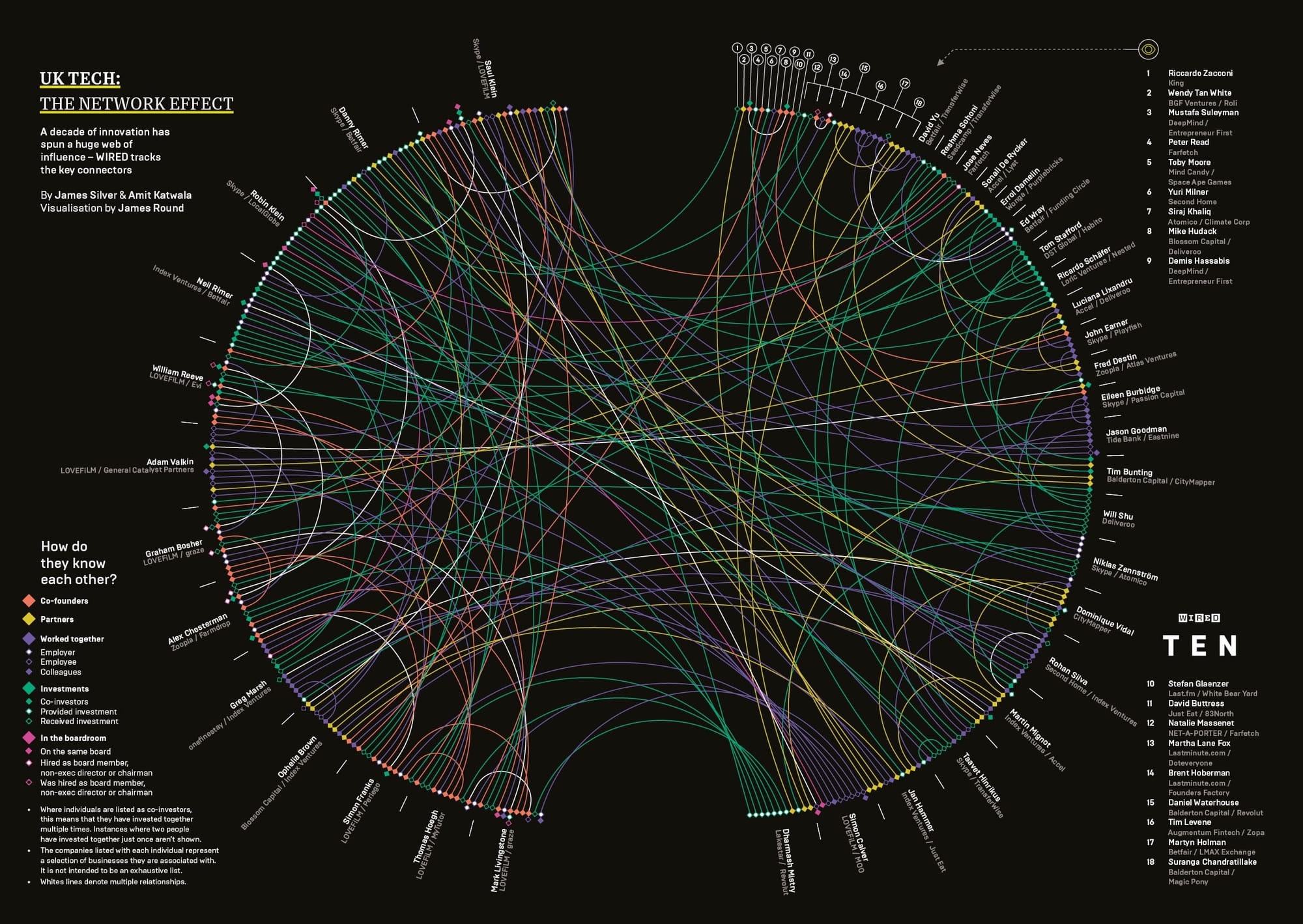
Devise a Design strategy for SICPA's identity platform
Original Brief
The year is 2030. You live on a small network of man-made islands that was recently established as a sovereign micro-nation.
Citizens continue to immigrate from a diverse array of countries from all around the world. The sovereign state issues new arrivals with identity credentials. As a designer of the identity platform, you are tasked with creating compelling and trustworthy experiences.
In what scenarios do you envision people could use these credentials to help them settle into their new society? What does the interaction look like when presenting and verifying credentials? Does it prioritise:
- A. Convenience?
- B. Privacy?
- C. Security?
Decide on one scenario and pick a strategy, we’d like to see you think/sketch/build/communicate your ideas using:
- Drawings showing how you developed the idea: including quick exploration of a variety of up to 10 different ideas.
- A simple mockup of your best idea (use your preferred design or prototyping tools).
- A short written description of your thinking, including how you might demonstrate successful outcomes.
Spending no more than 1 hour total, please combine the above into a format that you can present in 5-10 minutes at the start of your interview. We hope you enjoy the challenge!

1. Initial thoughts (15 min)
The exercise's scenario sets interesting boundaries, although 1 hour to devise a strategy and design something out of thin air feels out of touch. Generating relevant ideas is (generally) not the most difficult part of the exercise when we have a good enough understanding of the landscape.
Designing platform services for a diversity of people and services requires access to and co-creation with those various actors. This implies a range of contexts with various degrees of ambiguity and complexity, from formal/explicit technical systems to informal/tacit social systems.
The inherent uncertainty in such socio-technical systems (also called sociotechnical systems, see also here) cannot be resolved through a single-point solution, thus questioning the relevancy of using a traditional narrowing/funnelling design process that reduces opportunities (see Path dependence theory) and which increases the risks of premature convergence (local maxima/minima, see Premature convergence, and see also here).
Indeed, there are no "right answers" but a portfolio of good answers, with tacit expectations along with those explicitly written in the brief. I am wondering how far these expectations can be subverted, but reframing the challenge in the face of critical scrutiny is generally an expected quality in a strategic design role.
Good design is not a sprint, it's a marathon.
Principles of complexity-informed design
Before I go any further, here are important principles for unfolding a design process in a complex environment, which would inform my decisions:
- Set direction over a fixed destination (and update it as you move);
- Account for the locality of information due to network distribution and context boundaries (non-universality of solutions);
- Provide autonomy to the local network
- Generate transposability and exaptive capabilities (repurposing) through abstraction, stories, and metaphors;
- devise a portfolio of strategies informed through stories, then monitor change.
- Strategies can be contradictory, depending on context;
- Quick feedback-loops.
- Operationalise what works (see also the concept of liminality from the Cynefin framework).

2. Diving into the rabbit hole (45min)
In lack of access to real context, people, and systems, and in order to gain perspective on the topic of identity platforms, I did a rapid search & diagonal read-through of the following literature.
Readings
- Digital identity - Your key to unlock the digital transformation
- Digital ID Services Platform - Enabling secure delivery of next gen digital public services
- How governments can deliver on the promise of digital ID
- UK new legislation set to make digital identities more trustworthy and secure
Summary
Most articles present digital identity as opening opportunities to both ease access to many services to citizens and reduce costs of ID management for service providers.
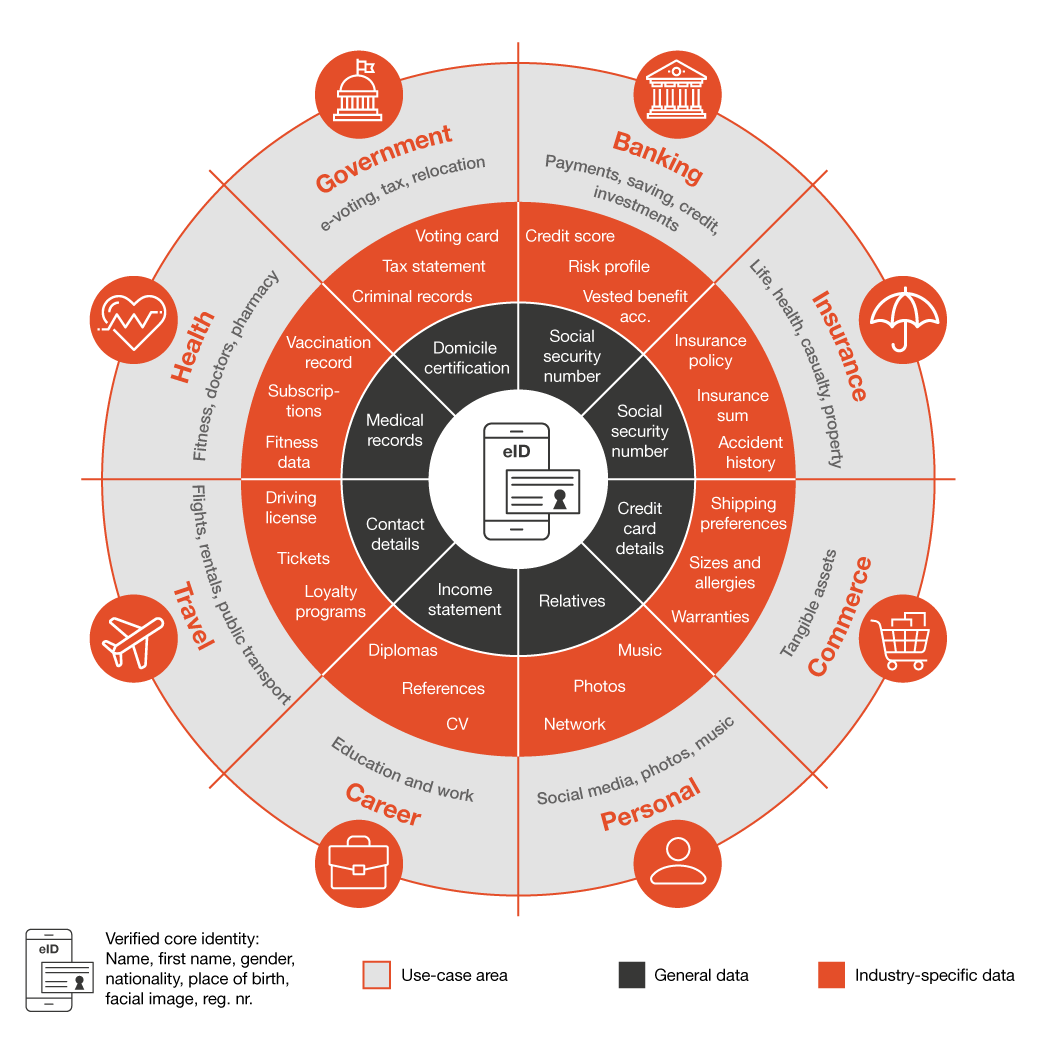
Several relationships are pointed out:
- individuals and government
- Individuals and business
- Government and business
The risk toward centralisation of citizens' data is mentioned but never further developed. The question of inequality of access to the digital space is also rarely discussed nor developed. Another overlooked risk, not even mentioned: convenience comes with the removal of redundancy in favour of efficiency. COVID-like crisis showed how overreliance on linear and fragile/non-resilient systems can be a dangerous/catastrophic bet.
Finally, the following quote hints us toward point 2 of complexity-informed principles about “the locality of information and non-universality of solutions“:
Many governments around the world have introduced ID systems that incorporate digital technology. However, only a few countries have managed to roll out the technology at scale, and only a minority of schemes have attracted a high number of compelling digital use cases.
Papers & studies
- A Right to be Forgotten and How Trans-Systemic Thinking Can Help Re-Conceptualize Privacy Harm in the Age of Analytics.pdf
- Digital Government- overcoming the systemic failure of transformation.pdf
- Rethinking citizen – government relationships in the age of digital identity- Insights from research.pdf
Summary
I have found much more literature, but time constraints enable me to select only a few. Here are the relevant bits.
Privacy as both recognition of one individual's autonomy and actors' responsibility of a just-enough-usage of data:
First, privacy can be conceived as the right to engage in individual self-definition and self-invention, rather than a right to be secluded or free from surveillance. Second, adopting civilian parlance, which correlates rights with duties, privacy is also the responsibility not to unnecessarily compromise one‘s own information in the naïve hope that the information will not be misused. – A Right to be Forgotten and How Trans-Systemic Thinking Can Help Re-Conceptualize Privacy Harm in the Age of Analytics.pdf
Governments are not transaction-based services but rather instrument-based institutions, making policy decisions on behalf of the community for which it has responsibility:
The purpose of a government is to make, implement and administer policy decisions on behalf of the community for which it has responsibility, for example a nation or a city, on matters that affect the lives of that community as a whole. […]
However, in relation to digital government, the dominant assumption has been that “government is a service industry”, with a private sector model in mind. This is dangerously misleading. In the case of the application of technology to the public sector, it has led to attempts to overlay the processes of newspapers, banks, and retailers on to public functions — the result is a model based on broadcasting information and simple transactions.
Yes, some of that does apply to the public sector, but it isn’t what it is really about. Citizens are not customers. – Digital Government- overcoming the systemic failure of transformation.pdf
Research insights (UK and New Zealand case studies) show the importance of transparency of use (and purpose of use) of data:
Moreover, transparency about the use of citizen identity information by government agencies was generally absent amongst the research participants. Participants provide their identity information to public sector agencies in order to obtain the service, but they usually do not understand how their identity information will be processed or used; why they need to fill in multiple forms with the same identity information; how and to what length their identity information will be stored or kept; and who will have access to their identity information, for example. – Rethinking citizen – government relationships in the age of digital identity- Insights from research.pdf
Also, for reference, I looked at migration statistics in Switzerland to understand predominant trends:
For What Reasons Do People Migrate to Switzerland?
Across all countries of origin, people migrated to Switzerland mainly for professional reasons, and to a lesser extent for family reasons. In fact, 56% of the Migration-Mobility Survey respondents said they moved to Switzerland to work in this country or to study (whereas 5% indicate both work and family reasons). https://nccr-onthemove.ch/indicators/for-what-reasons-do-people-migrate-to-switzerland/
Domain-specific design principles
- Anchor the digital into the analog world
- Enable local community-based governance
- Capacitate citizen agency/autonomy over their own data
- Incentivise just-enough data usage to service providers
- Empower citizens participation
- Enforce public policies
Some relevant context of use:
- temporary/resident ID
- public transport/travel
- alcohol/cigarette consumption
- access to restricted spaces
- open a bank account
- driver license
- access to education
- access healthcare system
- access social benefits
- access housing
- voting system
- taxes
3. Mapping topography (30min)
I used landscape topography mapping to highlight:
- What is stable, less subject to major changes, and how it erodes over time.
- What is subject to change overtime, ephemeral, and volatile.
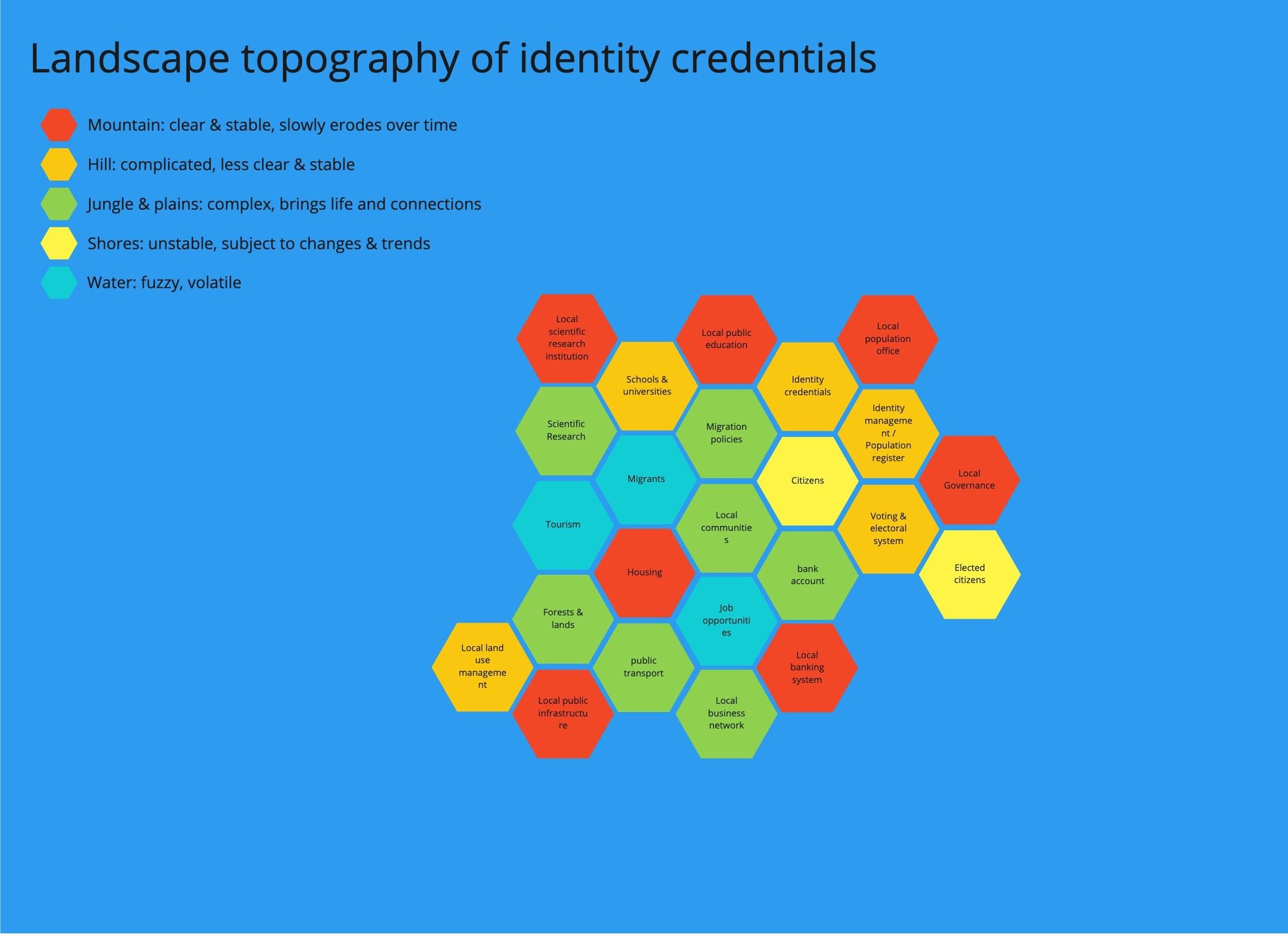
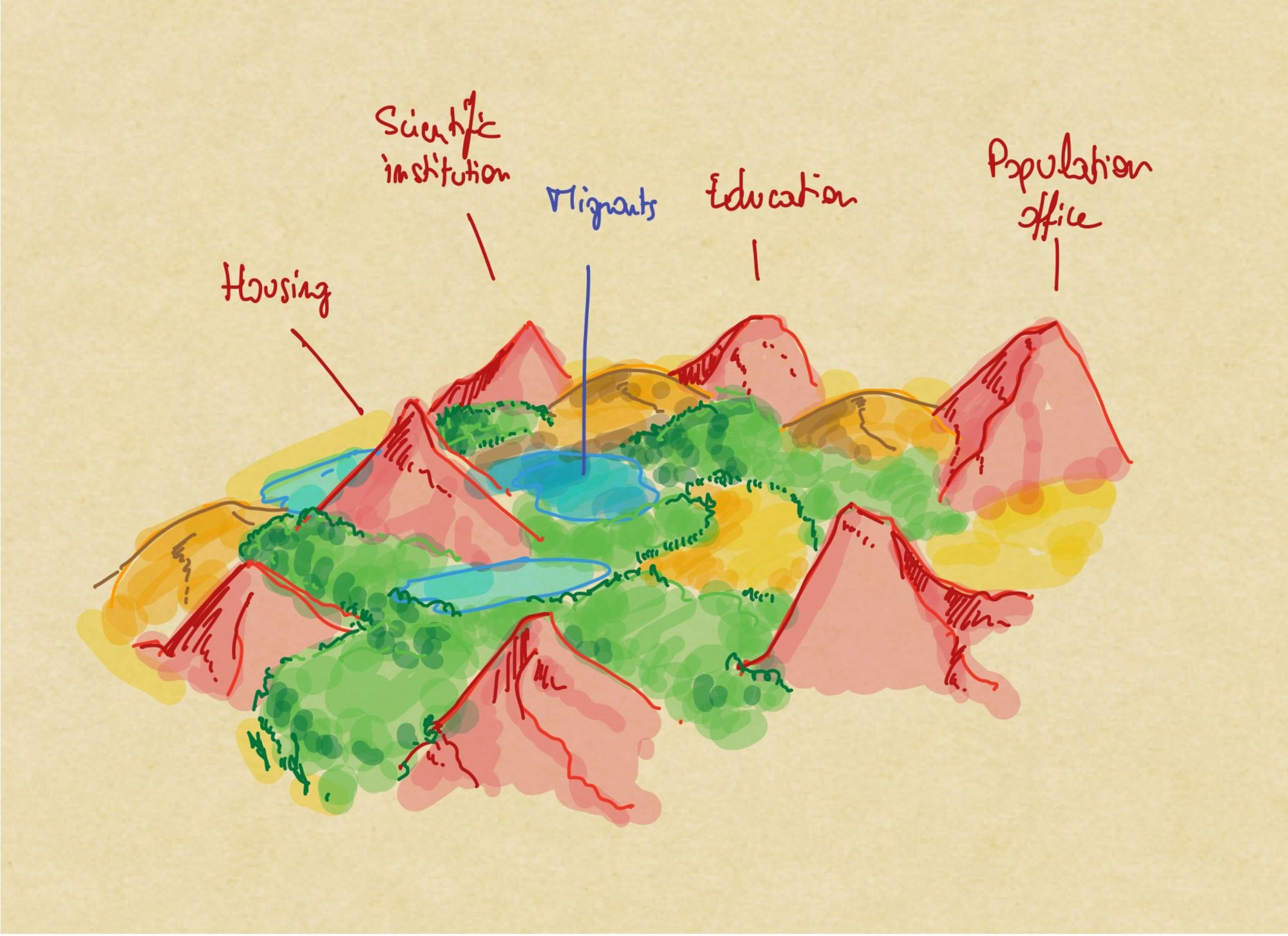
Topographical landscape mapping.
4. Scenarios dumping (20min)
I will refer to the sovereign micro-nation as New Aegeasia, from Aegeus in the Greek mythology, which gave its name to the Aegean Sea, and which happens to be the etymology of archipelago (a group or collection of islands).
Scenario 1
Newly arrived foreigner, who came because of a job opportunity, has to open a bank account, which will allow them to receive their salary and ease access to housing.
Scenario 2 (selected)
Student requests public transport subscription. New Aegeasia's policy allows free access to many transportation modes (bike, boat, train, bus, and tram) for students and any Aegeasian citizen below the age of 25, to incentivise the use of alternative transportation.
The public transport service, AeMov', requests access to students' information (full name, domicile address, age or student status).
Students can see the request, what info it will access, for how long, and for what purpose.
Students can use physical ID cards on physical small terminals, or a smartphone app, or attach information to a portable air tag-like device.
Scenario 3
Family of 2 adults & 2 kids, with no access to a smartphone or internet and no stable revenue. New Aegeasia's policy grants access to a "universal basic income" to non-student citizens or citizens above age 20.
Scenario 4
Resident foreigners need to announce an accident claim to their employer insurance after a medical consultation.
The employer insurance requests access to the last medical consultation record.
5. Opportunity mapping (20min)
Thinking in terms of adjacent possible to help generate ideas and connections.
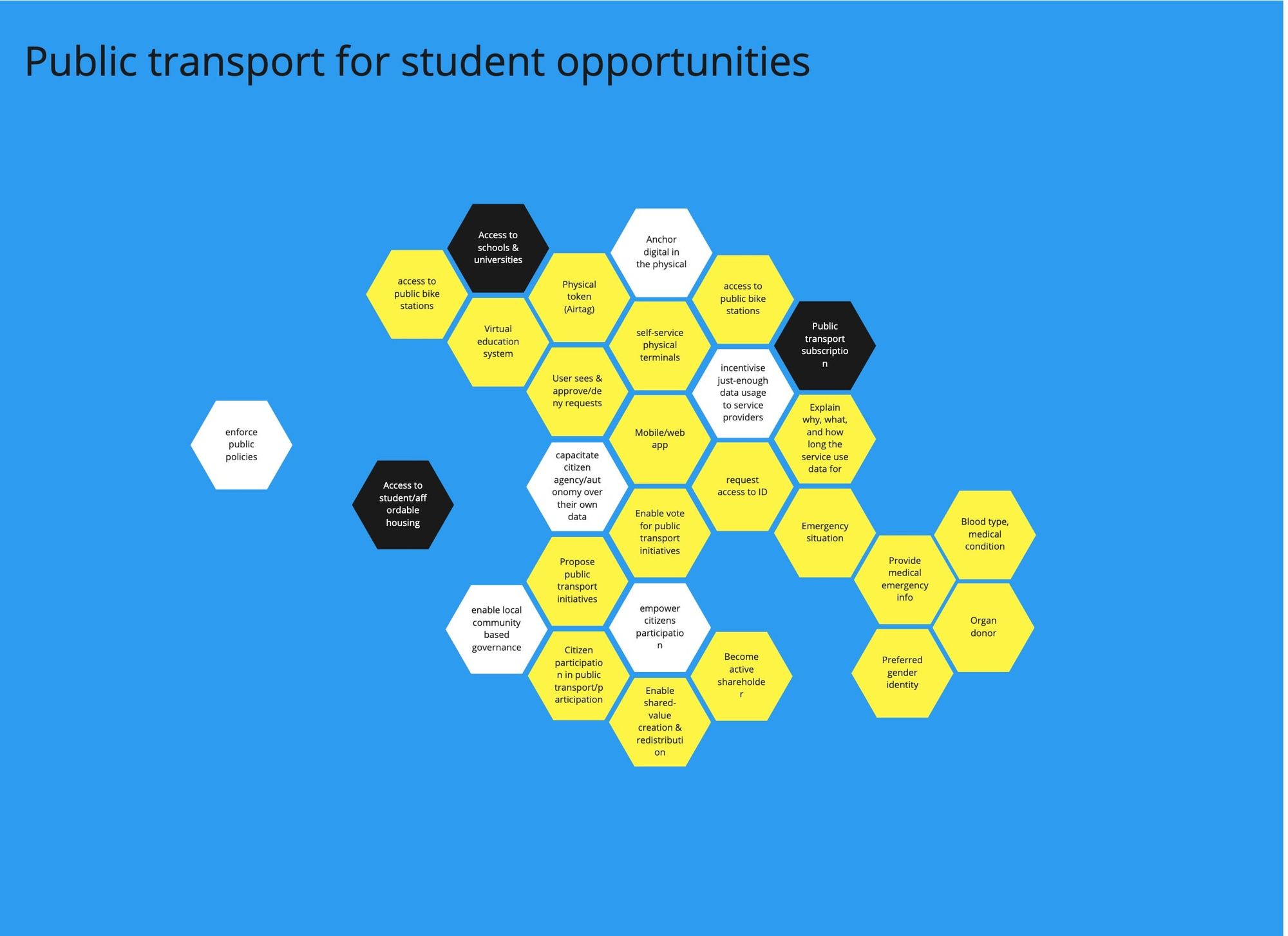
6. Converge (rapid mockups)
Rough ideas about specific interactions.
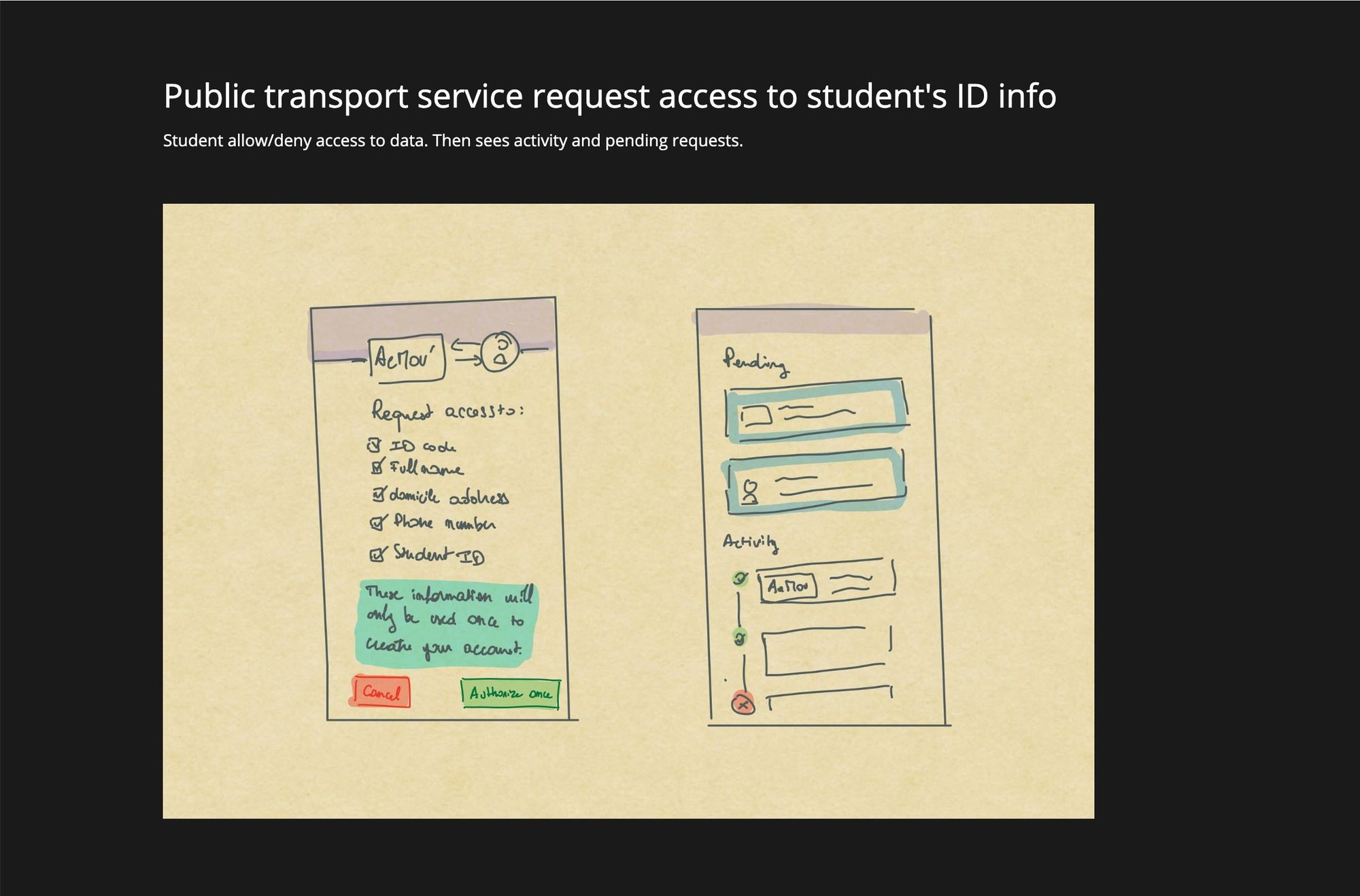
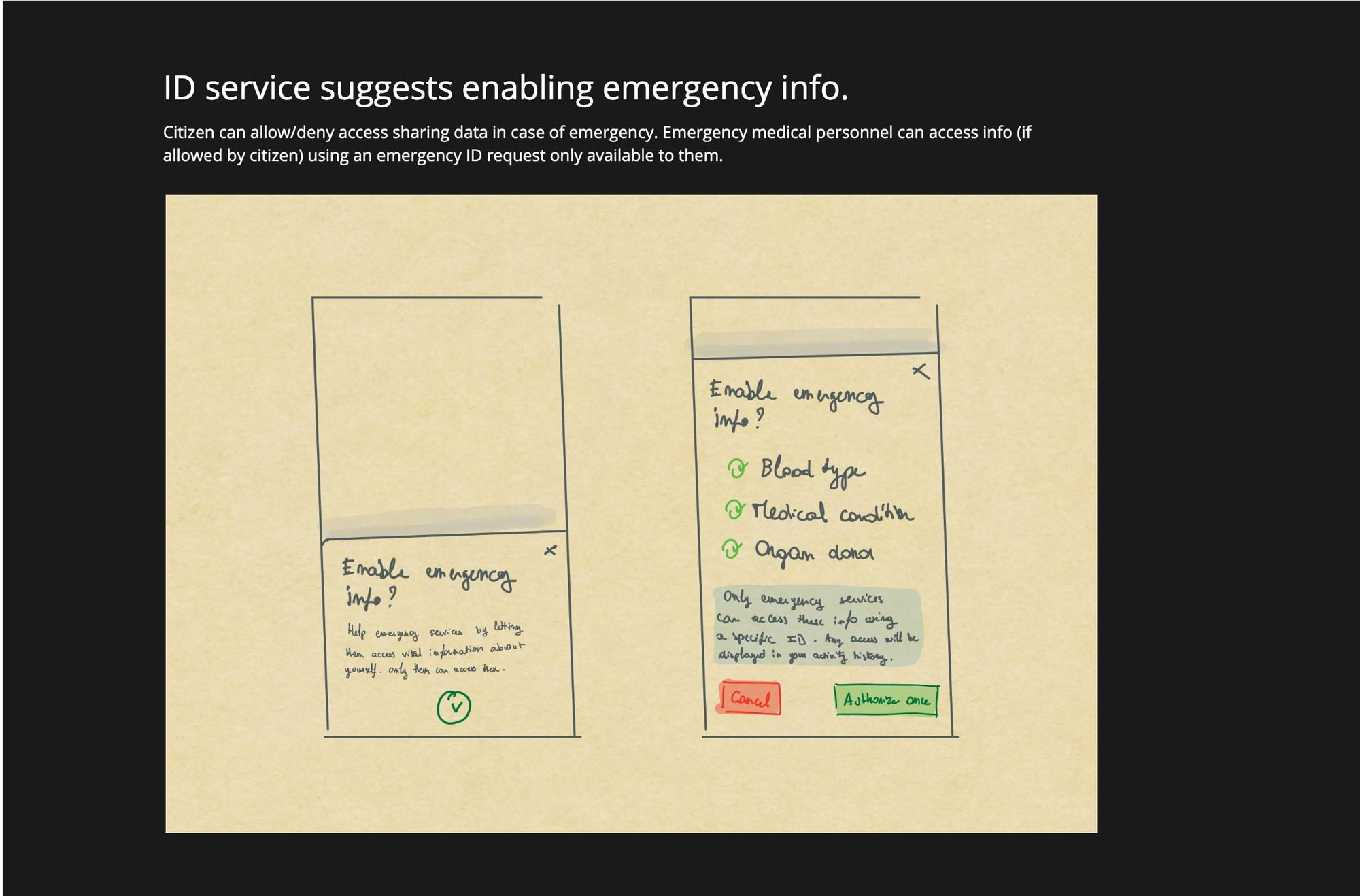
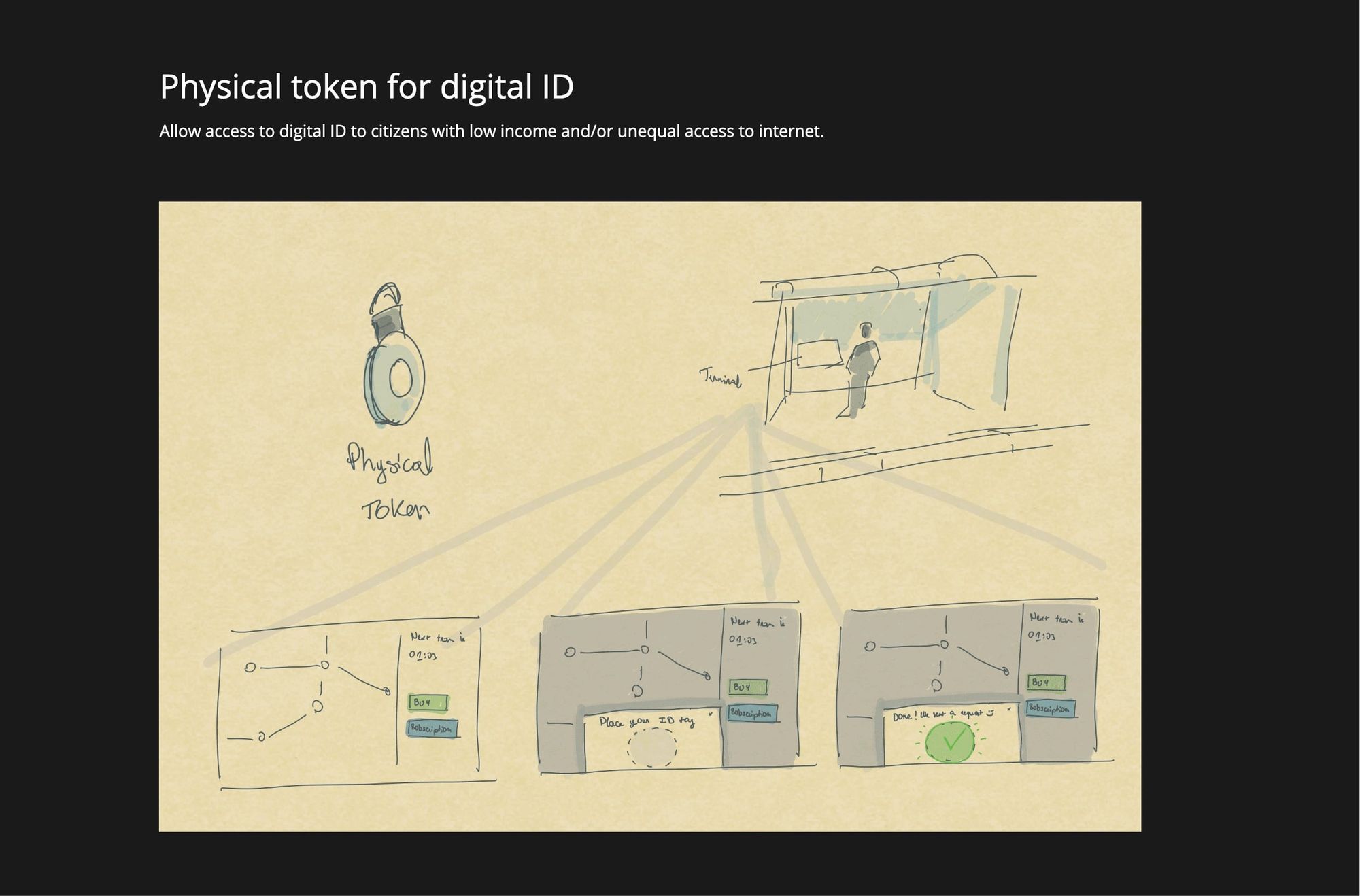
Initial mockups & intent.
7. Mapping outcomes
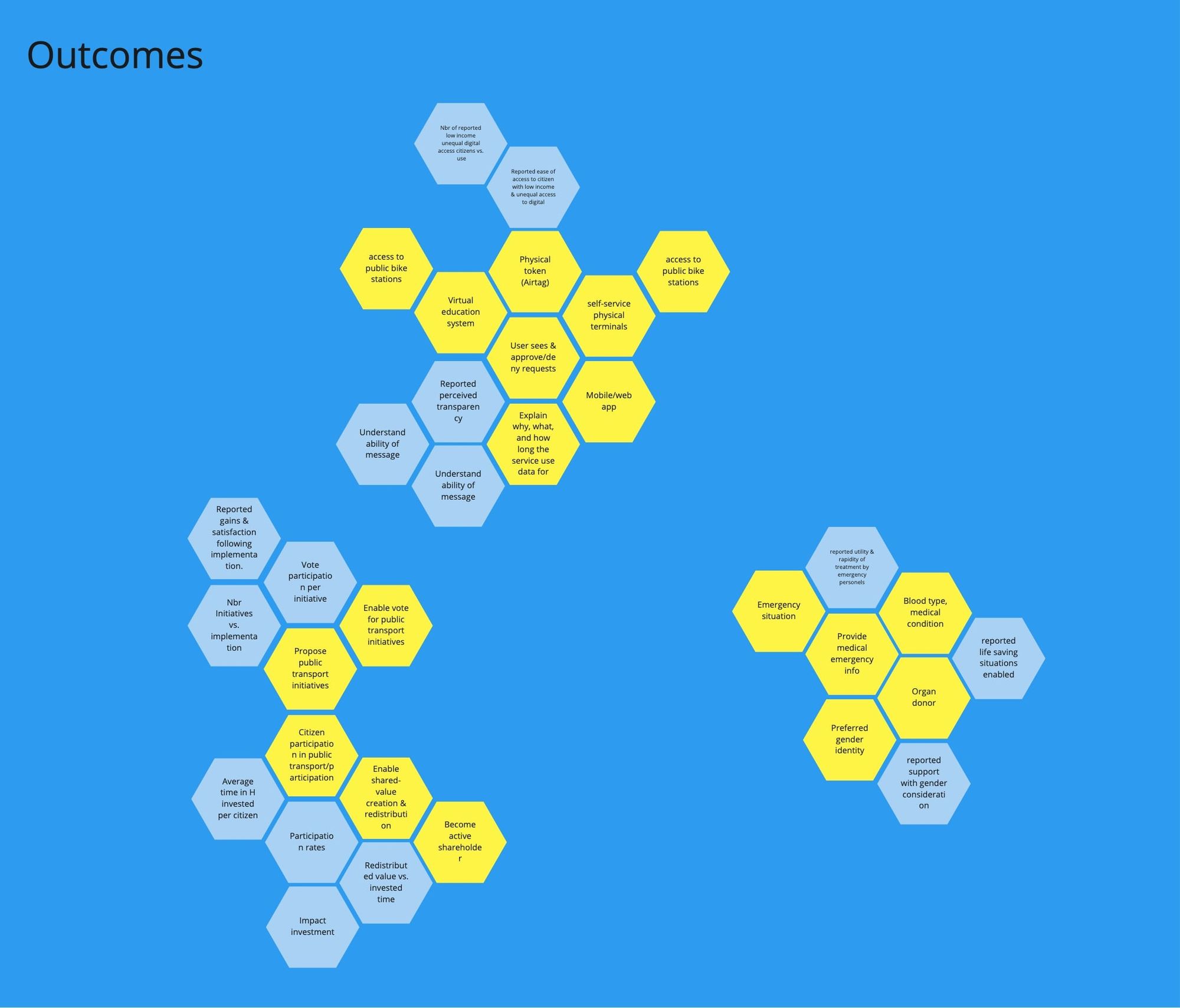
Conclusion
This exercise helped me get into the hiring process until the end, with excellent feedback and very thorough discussions on the work, design process, and how it could fit within the position. Unfortunately, the company decided to close the position before hiring anyone.




Discussion